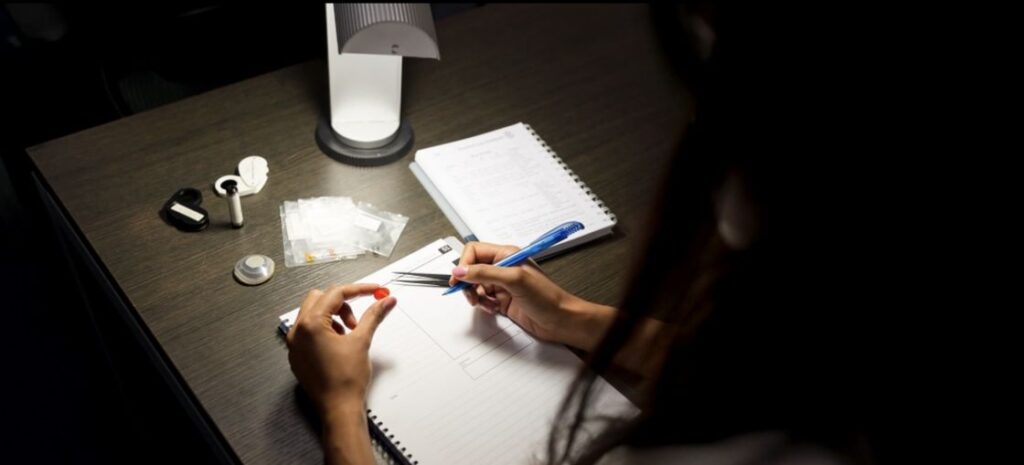
It can be easy to make mistakes
For students of gemmology who are just getting to grips with the subject, it can be easy to make mistakes and fall into common gemstone traps. However, there are some gem identification issues that can bamboozle even experienced gemmologists. Here, Gem-A Tutor Pat Daly discusses some common mistakes emerging gemmologists make regarding identification, synthetics, and treatments, especially in exam settings.
Gemmology presents us with many problems. It is easy to become confused about the identity and treatment of gem materials and to have difficulty distinguishing between natural and synthetic stones. As we become more experienced and are warned by the mistakes we make, our problems diminish but are never eliminated, and they do nothing for the confidence of people who are starting in the subject.
Natural stones may resemble each other closely until the gemmologist has become familiar with them. For example, Amethyst may be mistaken for iolite, although the purple colour of the first is easily distinguished from the blue of the second by those who have worked with them. Iolite might also be confused with sapphire or tanzanite, though, once again, an experienced gemmologist will separate them easily [the pleochroism, RIs, and SGs of the three stones are different and, usually, so are their colours].

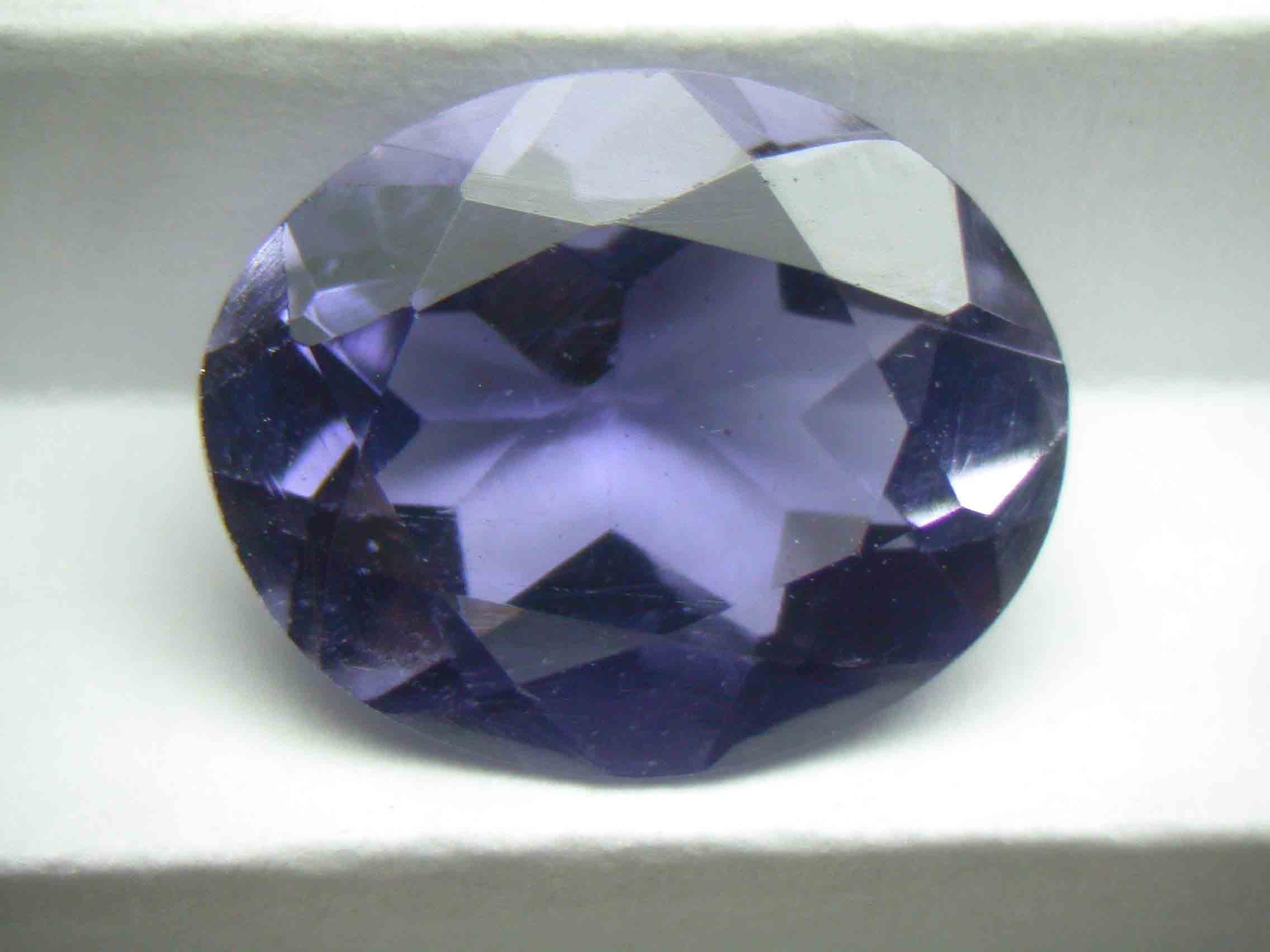
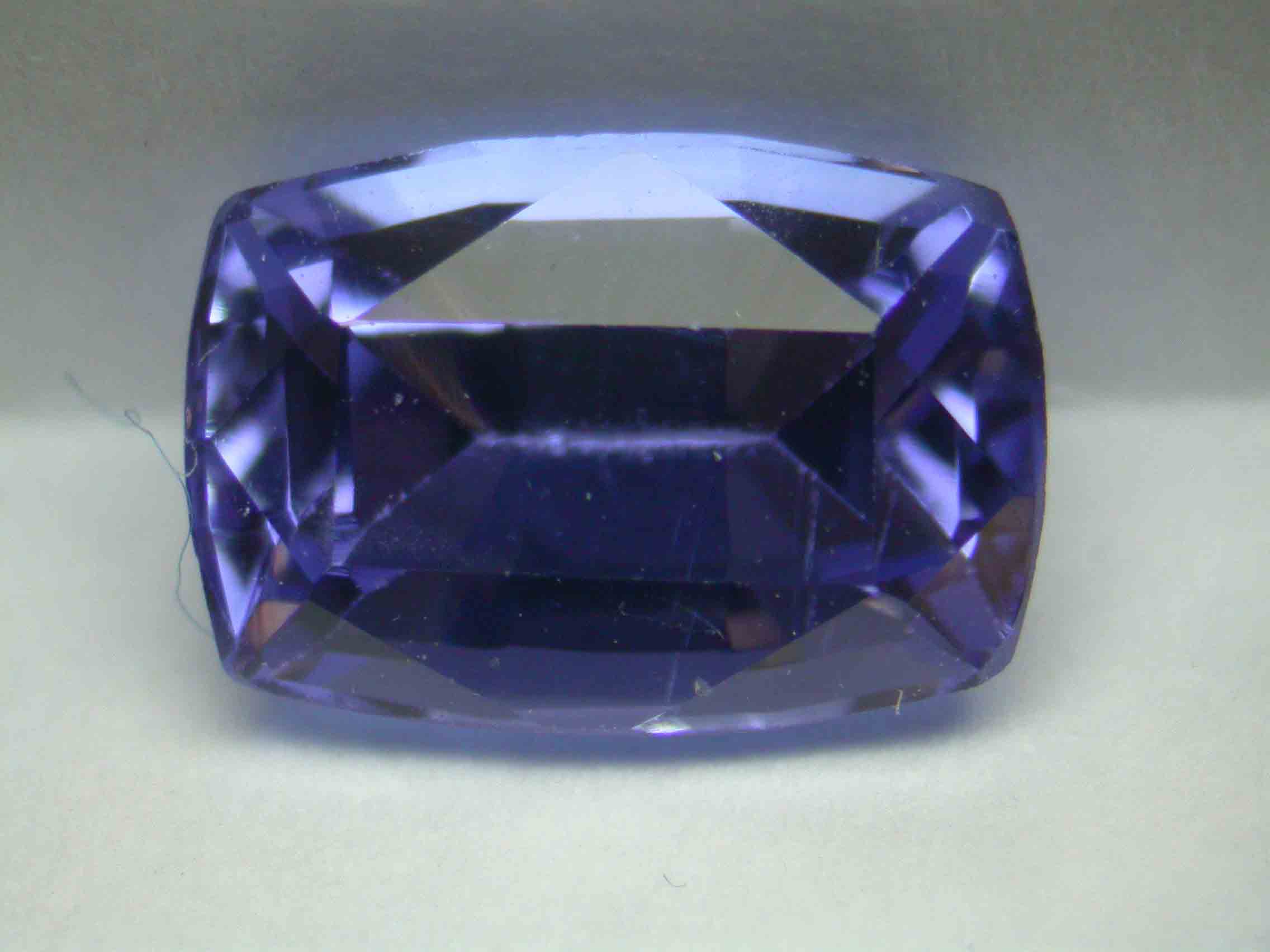
From top to bottom: a square step-cut purple amethyst, an oval-shaped iolite and a cushion-shaped tanzanite from the Gem-A archives.
Challenges for Experienced Gemmologists
Some gemstones cause problems even for experienced gemmologists. Jadeite and nephrite, for example, may be confused with each other or with almost any sub-transparent stone of similar colour. Given the range of colours which are possible in the jades, this includes a large number of stones.
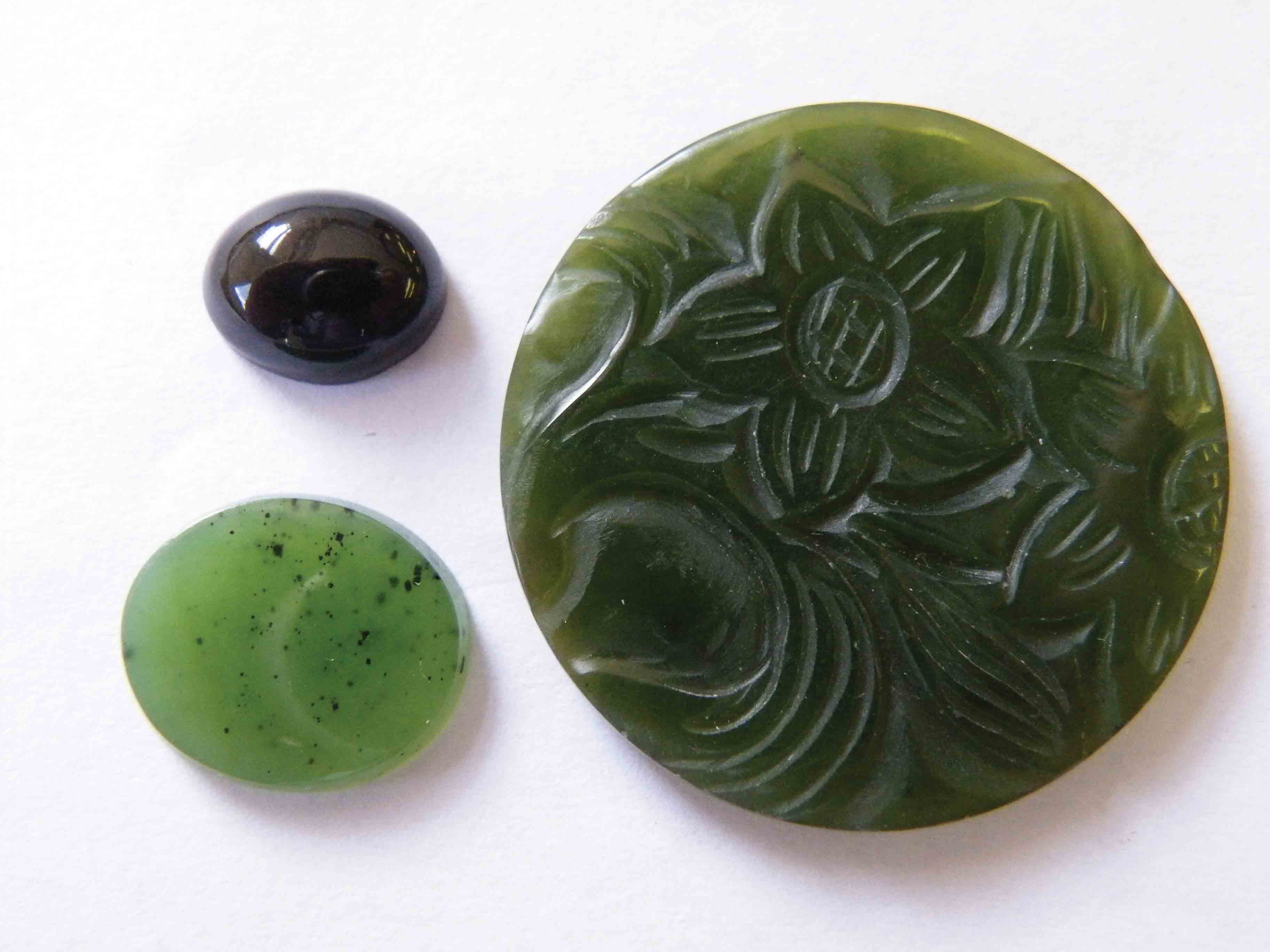
Samples of nephrite from the Gem-A archives.
Turquoise is another stone which most of us approach with caution. It is a sky-blue to greenish, opaque stone imitated by several natural and artificial materials. In addition to these problems, both jade and turquoise may be subjected to treatments which are hard to detect.
How to Avoid Gemmology Mistakes
Mistakes may be avoided by learning the key identifying features of gemstones and the materials which simulate them most effectively. Jadeite, for example, often has a granular appearance when torchlight is shone through it. Few materials which resemble it display this structure. Apart from veining, turquoise, by contrast, shows little or no structure when viewed through a loupe or low-powered microscope, whilst its simulants usually have some visible surface features by which they can be recognised.
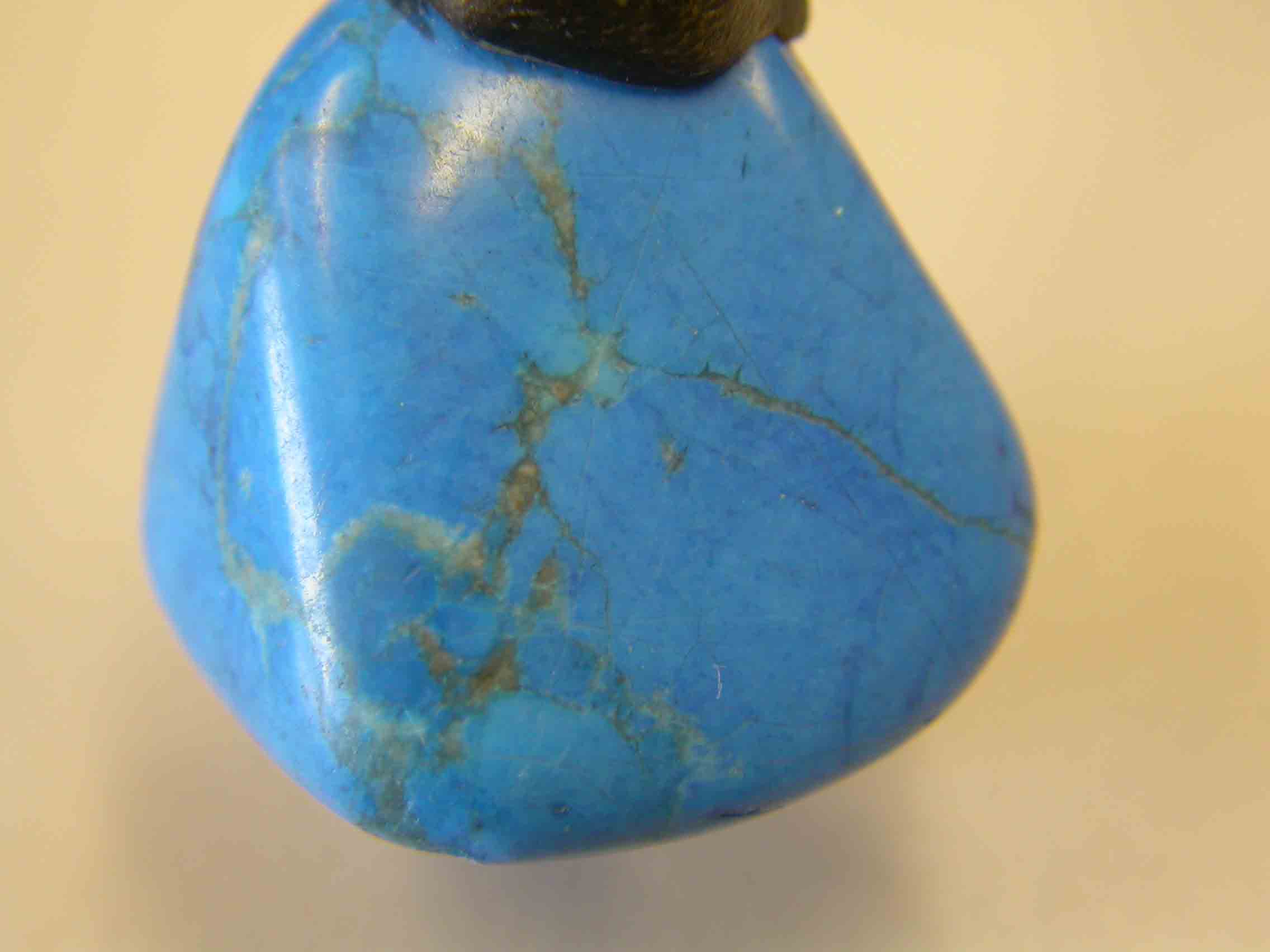
This turquoise simulant is dyed magnesite. Photographed by Pat Daly at Gem-A.
Treatments have been mentioned in connection with jadeite and turquoise, but they may be applied to many gem varieties. Some are easily detected using instruments, such as the Chelsea Filter and spectroscope for many green-dyed jadeites. In other cases, most trade gemmologists would have difficulty demonstrating that they had been carried out. High-pressure, high-temperature treatment, which has lightened the colour of a diamond, for example, may be impossible to detect without laboratory tests. Similarly, heat treatment of corundum, especially if it was carried out at temperatures below 1000°C, may be hard to recognise.
Artificial and Synthetic Materials
Artificial products used to substitute for gemstones include synthetic stones, factory-made materials having essentially the same composition and properties as a gem material, and imitation stones, which look like gemstones but may have little else in common.
Synthetic diamonds, emeralds, rubies and sapphires, alexandrite, quartz, opal, and spinel are widely marketed and may be hard to identify. This is particularly the case for synthetic diamonds and flux-grown synthetic stones, which may have inclusions resembling those of natural stones, and for natural quartz gems, some of which are relatively inclusion-free.
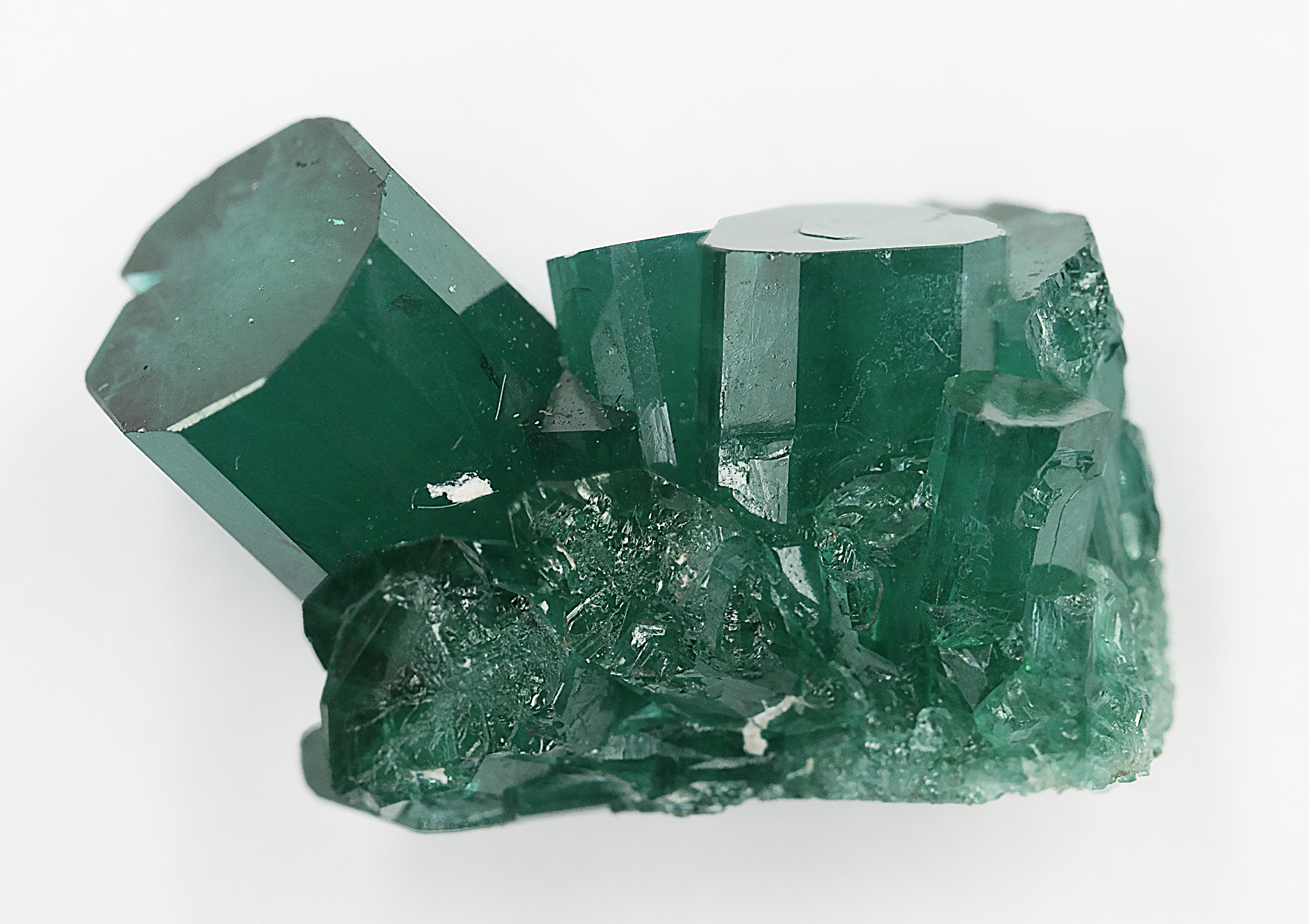
Synthetic flux grown emerald from the Gem-A archives.
As a result, gemmologists have little option but to learn as much as possible about the results expected from tests with standard instruments and the inclusions that can help identify natural and synthetic stones.
Detecting Imitation and Composite Gemstones
Imitation gemstones that do not share properties with those they simulate are usually easier to deal with. Composite stones, however, may be very deceptive and are almost certain to deceive inexperienced testers.
Those which incorporate pieces cut from natural stones are especially deceptive. Garnet-topped doublets, for example, have a bright lustre, like most of the stones they imitate, and have been made in all colours. Most were made before the middle of the 20th century, but they are still in circulation and there are rumours that they have been made more recently.

An example of an opal doublet from the Gem-A archives, photographed by Pat Daly.
Corundum-corundum doublets are also very deceptive. The top is made from natural greenish or yellowish sapphire, and the base is synthetic corundum. Instruments might suggest that the stone is real. If the base is of synthetic ruby, the spectrum and dichroism are likely to indicate this, and the natural inclusions in the crown will reinforce it. Those studying gemmology are well advised to check routinely that a stone is not composite before proceeding to identify it.
It is also possible to misidentify a natural stone as a doublet because the girdle looks a bit like a join between two parts. Here too, experience counts; time should be taken to look carefully at known composite stones so that both the presence and the absence of a join can be decided with confidence.
Behaviours that Contribute to Gemmology Mistakes
Certain behaviours contribute to the likelihood that mistakes will be made, especially in gemmological examinations (including those conducted for Gem-A Foundation and Diploma courses!). They include:
Overreliance on one feature
It is important not to home in on one feature and use this as a foregone conclusion. Instead, a stone should be tested thoroughly before concluding based on all the available evidence.

Avoid certain behaviours that contribute to common gemmological mistakes. They may just help you during Gem-A Gemmology Foundation and Diploma examinations.
Rejecting the evidence
Proving the identity of a stone and then deciding to call it something else because it is felt that the tutor or examiner would not give such a straightforward stone for testing.
Chasing a definitive answer
Feeling that a definite answer must be given to a gemmological question even though there is not enough evidence to justify it. In examinations, stones must be identified unless otherwise stated, but examiners ensure the necessary evidence is available. In other situations, this is not always the case, and gemmologists should not feel embarrassed to decline to give unequivocal answers. However, they should feel obliged to give good reasons for their refusal.
Getting flustered
Feeling rushed, stressed or distracted makes it more likely that mistakes will be made, so gemmologists should try to take a calm, unhurried approach to gem testing. Of course, in commerce and exams, such advice is much easier to give than to adopt, but it is useful even so.
Don’t presume you’re being tricked
Finally, it is sometimes asked if examiners will set tricky stones to test in practical exams. Firstly, it must be said that examiners do not set out to trick candidates. They will, however, expect a high degree of gemmological knowledge and practical ability and may include stones which could be included in a discussion of difficult or “tricky” stones. These may include jadeite, for example, or flux-grown synthetic corundum because a competent gemmologist would be expected to recognise straightforward examples of these stones.
The complexity of gemmology as both an art and a science means you’re likely to make mistakes along the way. And that’s okay! Mistakes are part of the learning process and will help you build skills to enhance your abilities in the field, retail environments, and buying situations. So stay calm, be patient, and with the right training, you will know what to do.


